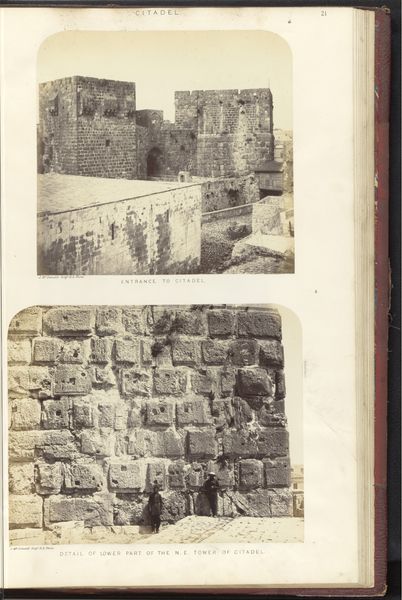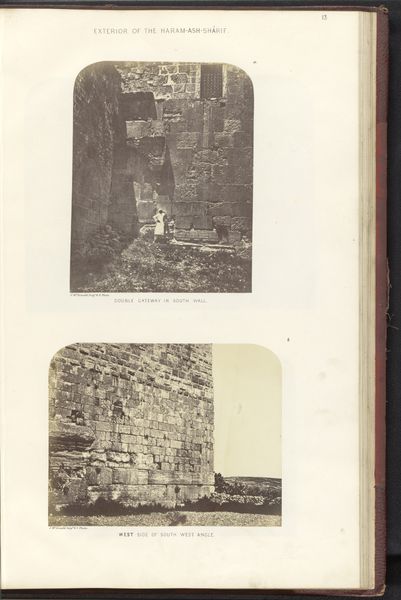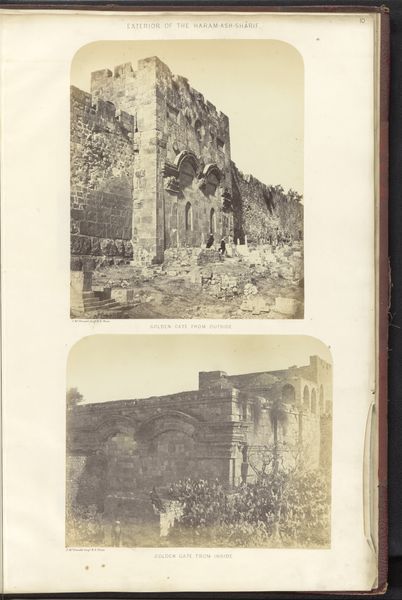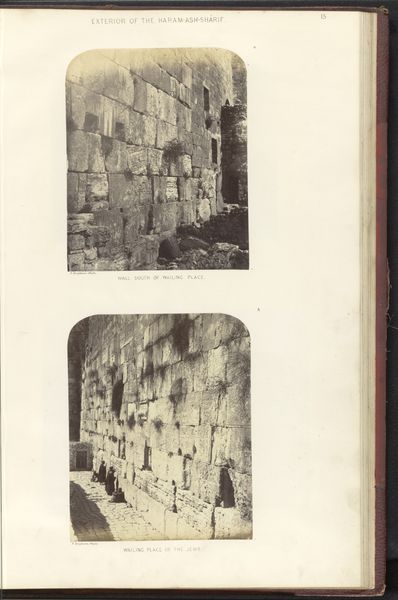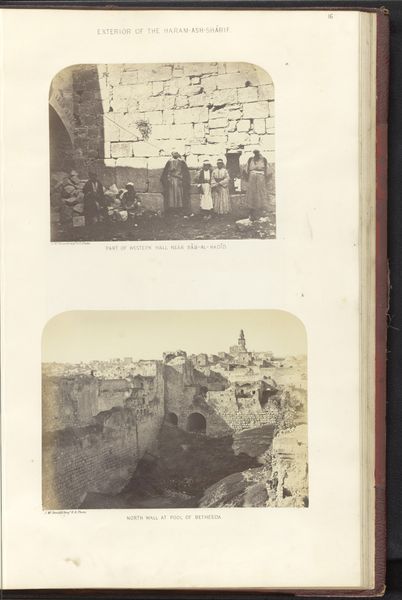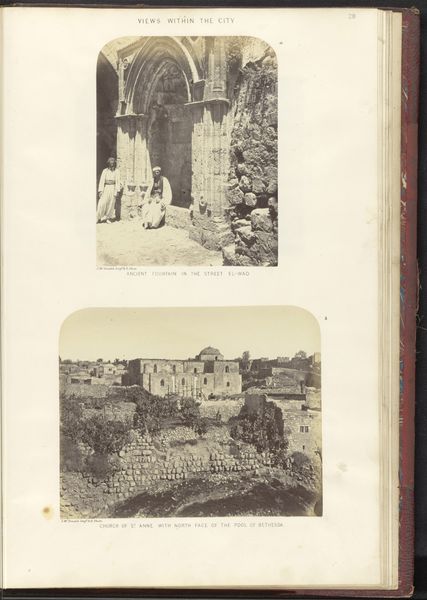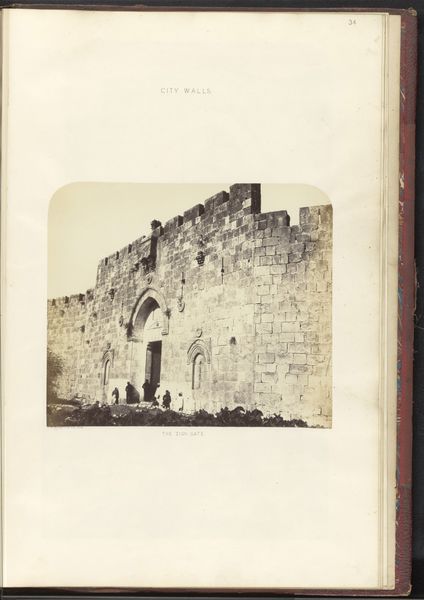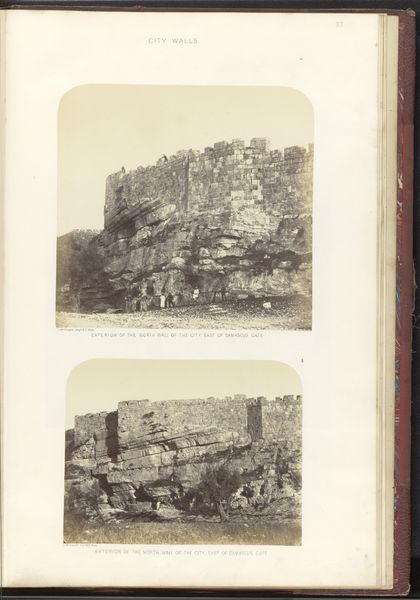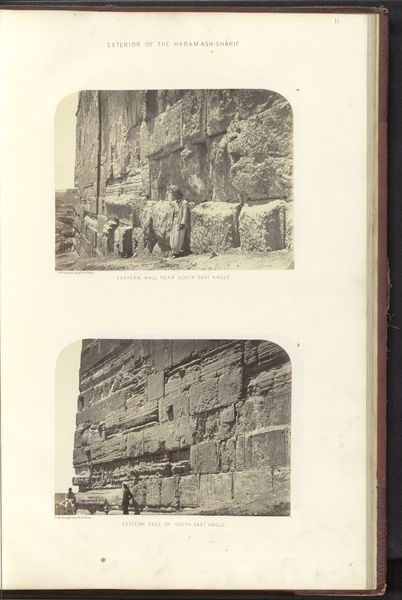
Gezicht op een deel van de muur bij de zuidwestelijke hoek van de Tempelberg en een gezicht op het metselwerk van de Klaagmuur, in Jeruzalem before 1865
0:00
0:00
photography, albumen-print
#
landscape
#
photography
#
coloured pencil
#
ancient-mediterranean
#
islamic-art
#
albumen-print
#
realism
Dimensions: height 523 mm, width 340 mm
Copyright: Rijks Museum: Open Domain
Curator: The texture in this albumen print, likely dating to before 1865, depicting part of the Temple Mount in Jerusalem, is just remarkable. Look at the play of light on the stones. Editor: My immediate impression is of weight, both physically and metaphorically. The sheer mass of the wall suggests enduring history, but the tone evokes a sense of solemnity and even loss. Curator: The photographer, James McDonald, captured not just a landscape but a powerful symbol, loaded with cultural and religious meaning. The Western Wall, a remnant of the Second Temple, is front and center in one of the images. Editor: Exactly. And observe how the photographer frames the figures praying at the Wall. Their presence amplifies the site’s importance, highlighting its role as a place of continuous, centuries-long worship and remembrance. They are dwarfed by the scale of the wall. Curator: These blocks of stone whisper of ancient history but they also echo more recent cultural memory. For Jewish people, this site is a visceral link to their ancestral past and a place of both mourning and enduring hope. It connects directly to Solomon’s Temple, destroyed millennia ago. Editor: And let’s not forget the political history etched into these stones. Consider the historical context, the imperial ambitions of the British Empire at this time and the growing interest of Westerners in Jerusalem’s holy sites. The act of photographing becomes a form of possession and documentation. It shaped the world's perception of Jerusalem, too. Curator: It truly invites layers of interpretation, especially now. It encourages reflection on faith, memory, and power, doesn't it? Editor: Absolutely. This single image encapsulates not just a place, but also a moment, laden with historical complexities and enduring cultural significance.
Comments
No comments
Be the first to comment and join the conversation on the ultimate creative platform.
